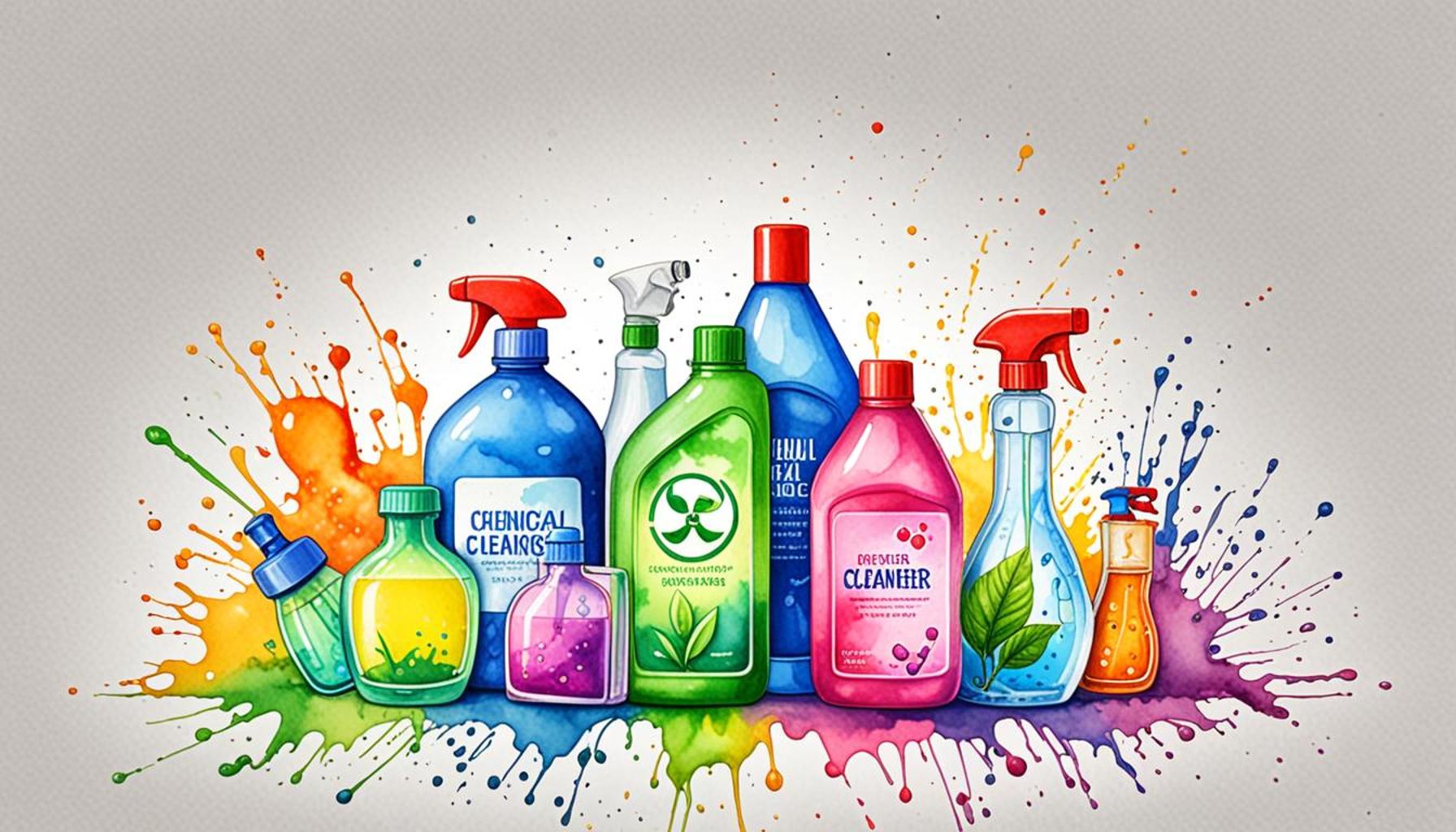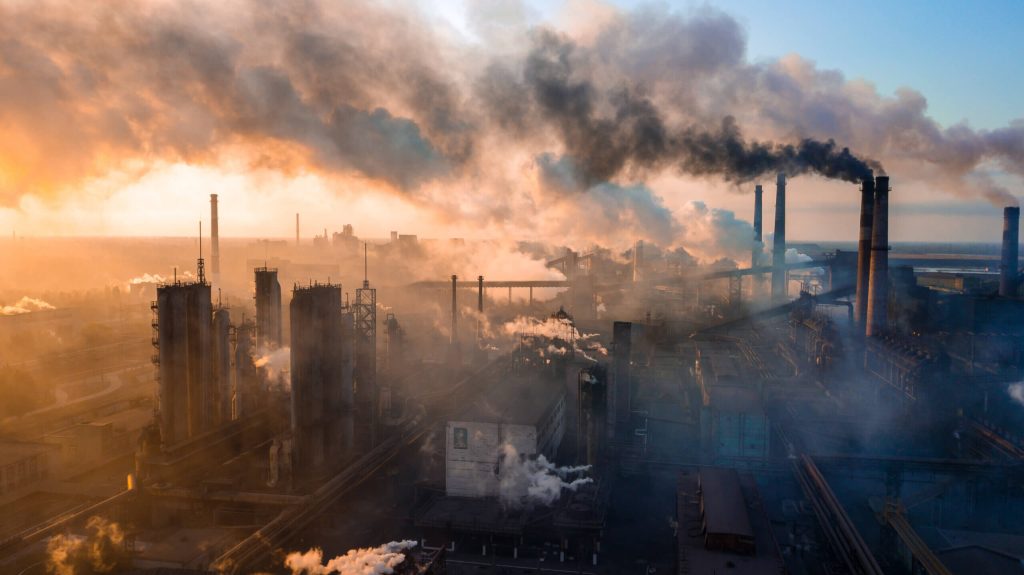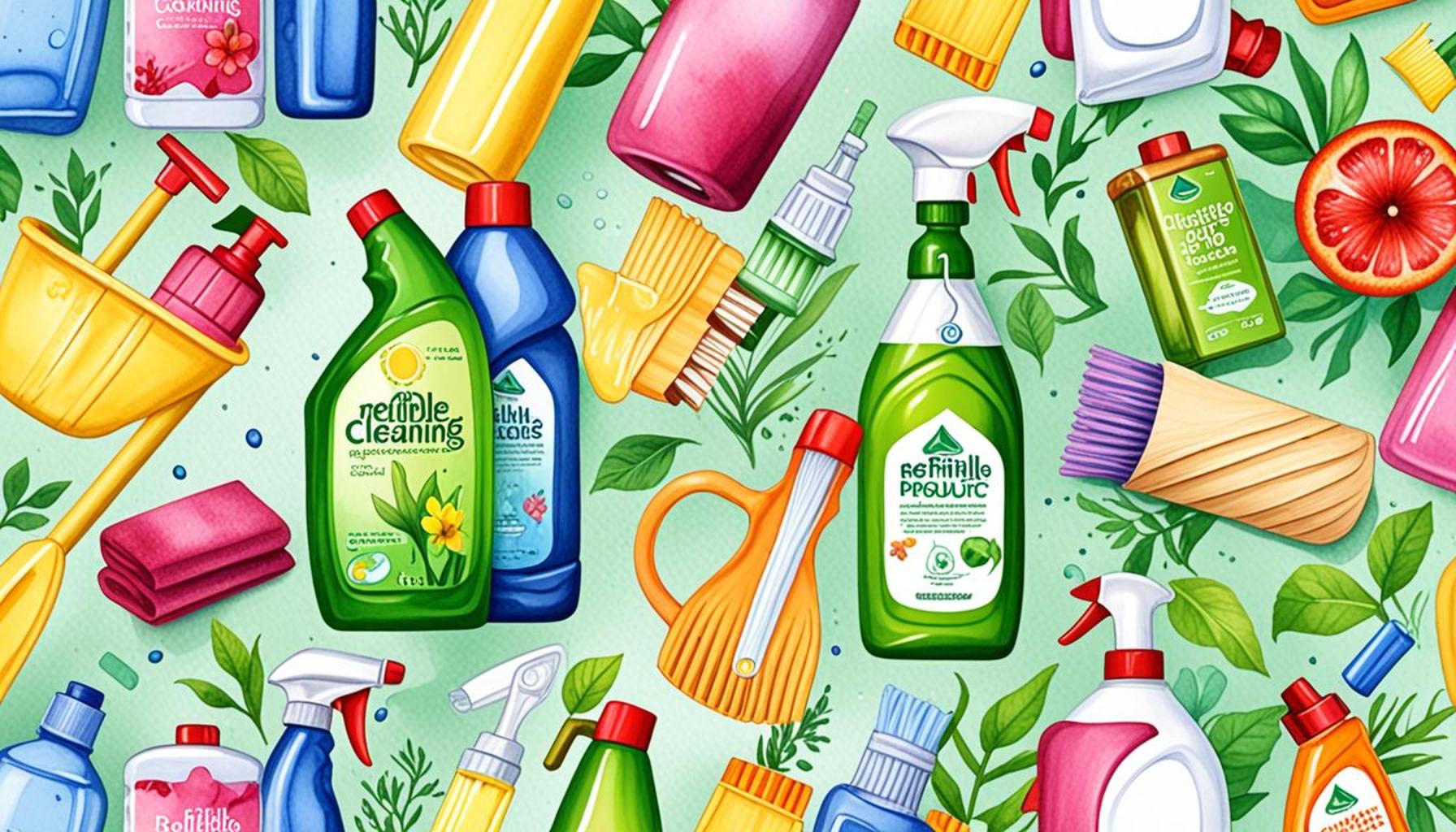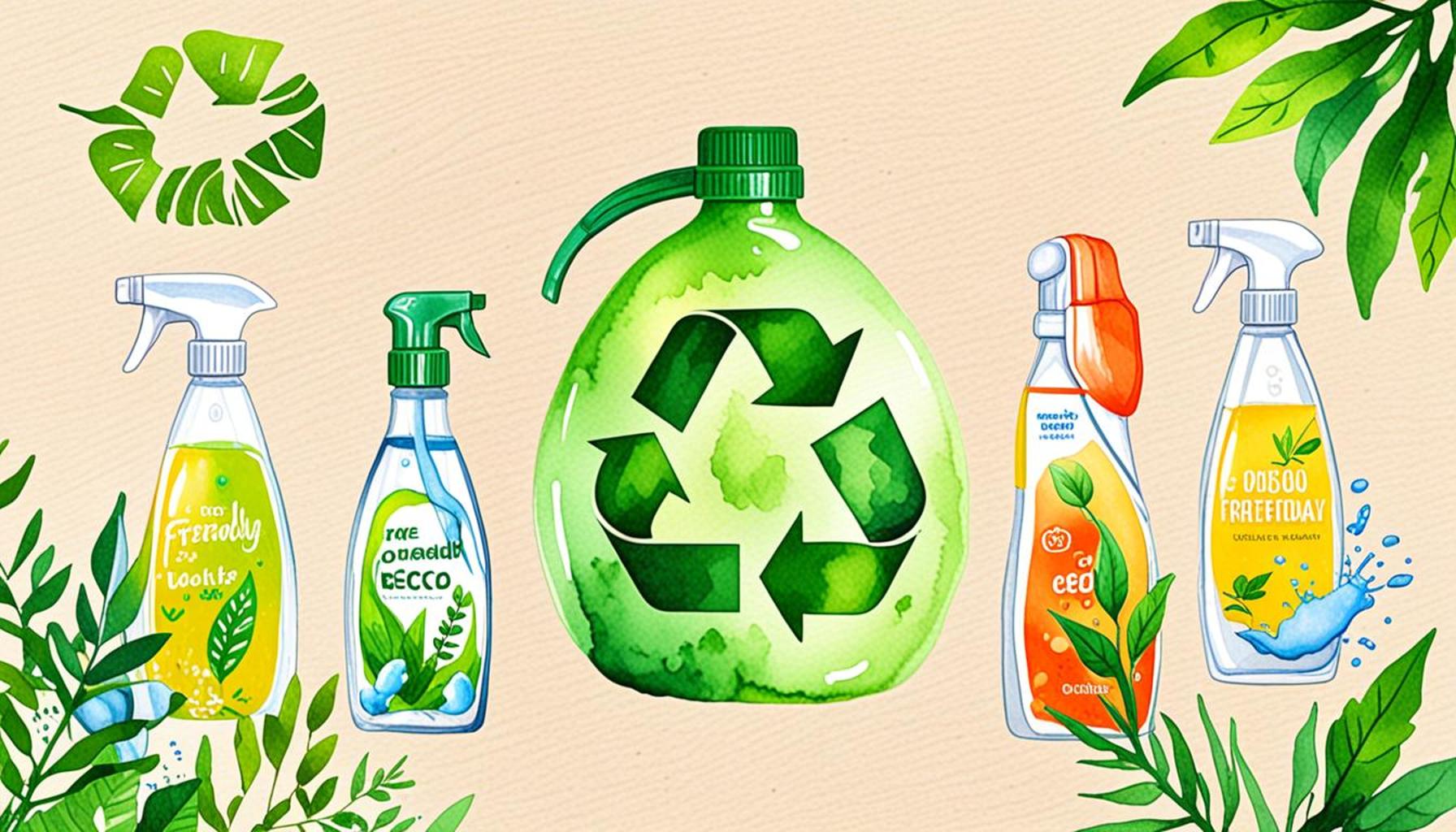Chemical Cleaners Understanding Their Environmental Impact

The Hidden Dangers of Chemical Cleaners
In every household, convenience is a top priority, and the cleaning industry offers a plethora of chemical cleaners that promise a hassle-free solution to maintaining a pristine environment. However, the allure of easy cleaning often masks serious concerns regarding the safety of these products. It is crucial for consumers to recognize the profound implications these cleaners can have not only on personal health but also on the broader ecosystem.
Take, for instance, Volatile Organic Compounds (VOCs). These chemicals, commonly found in products like air fresheners and cleaning solutions, can easily evaporate into the air and contribute to indoor air pollution. Exposure to VOCs has been linked to various health issues, including headaches, nausea, and respiratory problems. A study from the Environmental Protection Agency (EPA) found that indoor air can, in fact, be more polluted than outdoor air, primarily due to the use of household chemicals. This underlines the importance of choosing products that are free of VOCs or labeled as low-VOC alternatives.
Additionally, some cleaners contain persistent chemicals which resist degradation in the environment. These substances can accumulate in soil and water sources, posing a threat to wildlife. For instance, certain biocides used in disinfectants can harm beneficial insects, fish, and birds, leading to imbalances in local ecosystems. The long-term ramifications of these persistent chemicals can be devastating for biodiversity and food webs.
Another concern involves phosphates, a common ingredient in many dishwashing detergents and laundry cleaners. While they are effective at removing grease and grime, phosphates can lead to nutrient pollution in aquatic ecosystems. When washed into water bodies, they stimulate excessive growth of algae, known as algal blooms. These blooms deplete oxygen in the water, resulting in dead zones where aquatic life cannot survive, disrupting entire ecosystems.
Regulatory Landscape and Consumer Power
In the United States, the regulation of household cleaning products is a complex landscape. The Food and Drug Administration (FDA) and EPA provide oversight, but the specific chemical formulas often remain proprietary information, leading to a lack of transparency and consumer awareness. As a result, the safety and efficacy of these products can vary significantly, highlighting the pressing need for more stringent labeling and safety regulations.

As informed consumers, we can influence change by opting for sustainable alternatives. By choosing eco-friendly brands that prioritize plant-based ingredients and biodegradable formulas, we not only protect our health but also contribute to the well-being of our planet. For those looking to make a switch, consider making cleaning products at home using simple ingredients like vinegar, baking soda, and lemon juice. These natural options are not only effective but also significantly reduce hazardous chemical exposure.
This exploration into the cleaning industry reveals critical challenges posed by conventional products. By elevating our awareness of the effects of chemical cleaners, we can make empowered decisions that align with our health goals and environmental responsibility.
CHECK OUT: Click here to explore more
Unmasking the Chemical Constituents
To understand the environmental impact of chemical cleaners, it is essential to delve into the specific ingredients that many of these products contain. While the cleaning power of these products can be tempting, knowledge of their harmful components is crucial for making informed choices. Numerous common chemical cleaners harbor substances that not only jeopardize human health but also pose significant risks to the environment.
One of the most scrutinized groups of chemicals is surfactants. These agents are responsible for breaking down grease and grime, allowing for easier cleaning. However, surfactants can be toxic to aquatic organisms. When these cleaners enter waterways—whether through runoff, wastewater, or improper disposal—they can disrupt the function of cell membranes in fish and other aquatic life, harming their ability to thrive. A notable example is the use of nonylphenol ethoxylates (NPEs), a type of surfactant linked to endocrine disruption in wildlife, which can affect reproduction and growth.
Another category of concern is solvents, frequently found in all-purpose cleaners and degreasers. Many of these solvents, including alcohols and ketones, can release harmful emissions into the environment during their use and disposal. Exposure to these compounds not only impacts human health—with symptoms ranging from dizziness to impaired coordination—but also contributes to ground-level ozone formation, worsening air quality and exacerbating respiratory issues in sensitive populations.
To paint a clearer picture, here are some key concerns associated with common chemical cleaners:
- Phthalates: Often used to enhance fragrance, these chemicals can disrupt hormone function and potentially lead to reproductive health issues.
- Formaldehyde: Present in some disinfectants, this compound is classified as a probable human carcinogen and can contribute to respiratory issues.
- Chlorine bleach: While effective at killing germs, chlorine can produce hazardous by-products when it reacts with other substances, leading to harmful fumes that are detrimental to both health and air quality.
These ingredients exemplify why a comprehensive understanding of chemical cleaners is necessary. Beyond immediate cleaning capabilities, the long-term implications of their usage are profound, impacting both health and environmental sustainability. For instance, the disposal of cleaner residue contributes to the growing concern surrounding water pollution. The infiltration of these substances in freshwater sources may lead to the degradation of drinking water quality and threaten the survival of various aquatic species.
As consumers, acknowledging these hidden dangers empowers individuals to take action. Making informed choices about cleaning products not only safeguards personal health but also plays a critical role in protecting our planet’s ecosystems. This discussion sets the stage for exploring the regulatory landscape and how consumer behavior can drive the demand for greener alternatives.
| Advantages | Insights |
|---|---|
| Environmentally Friendly Options | Biodegradable formulas that reduce pollution levels. |
| Health Benefits | Minimizing exposure to harmful chemicals enhances overall well-being. |
| Cost-Effectiveness | Many eco-friendly cleaners are affordable and can be made at home. |
| Versatility | Natural cleaners can effectively tackle different surface types without damage. |
Understanding the environmental impact of chemical cleaners also entails recognizing their composition and how they contribute to pollution. For instance, conventional cleaners often release volatile organic compounds (VOCs) that not only affect indoor air quality but also contribute to smog and environmental degradation. In contrast, opting for eco-friendly alternatives can significantly decrease these harmful emissions.Further, research highlights that the use of concentrated cleaners reduces waste, requiring less water during production and transport. This approach not only lessens the ecological footprint but also emphasizes sustainability—a growing concern amongst consumers. By making informed choices about cleaning products, individuals can play a vital role in fostering a healthier planet. In light of these aspects, it’s imperative to investigate and choose cleaners that align with both personal health and environmental stewardship. The movement towards understanding chemical cleaners’ impacts is not merely a trend; it’s a critical step towards safeguarding our ecosystems for future generations.
CHECK OUT: Click here to explore more
The Role of Regulations and Consumer Awareness
As the alarming evidence mounts regarding the environmental impact of chemical cleaners, regulations have evolved to address these concerns. In the United States, the Environmental Protection Agency (EPA) plays a pivotal role in overseeing the safety of chemicals used in household products. However, the fragmented nature of regulations can lead to gaps in protection. For instance, the Toxic Substances Control Act (TSCA) allows the EPA to manage existing chemicals, but the process is often slow and complicated, leaving many harmful substances unregulated in household cleaning products.
The Consumer Product Safety Commission (CPSC) also contributes to regulating certain cleaners, particularly those intended for disinfection. However, loopholes in existing laws can allow manufacturers to bypass comprehensive testing and labeling, leading to consumer products that may not fully disclose potential hazards. Consequently, this can leave families unaware of the health and environmental risks associated with their cleaning routines.
In the face of regulatory shortcomings, consumer awareness has become a powerful tool for change. An increasing number of consumers are prioritizing environmentally friendly products, but the market is flooded with misleading labels such as “eco-friendly,” “green,” or “natural,” which lack standardized definitions. This can create confusion and make it challenging for consumers to identify truly safe alternatives. The Federal Trade Commission (FTC) has guidelines addressing environmental marketing claims, but enforcement is limited. Thus, informed consumers must be diligent in researching the ingredients and certifications of cleaning products.
Additionally, trends toward sustainability have spurred innovation in the cleaning industry. Companies are emerging with products that utilize plant-based surfactants and biodegradable components, aiming to minimize their ecological footprint. According to a report by Statista, the green cleaning products market in the U.S. is projected to reach around $7.6 billion by 2023, reflecting the growing demand for sustainable, non-toxic alternatives. These products often tout their ability to clean effectively while reducing the environmental impact, addressing concerns about water quality and air pollution.
Educational campaigns and certifications—such as Green Seal and EPA’s Safer Choice label—are also gaining traction, helping consumers identify safer products. This creates an opportunity for informed decision-making, enabling households to choose items that preserve human health without sacrificing cleaning efficacy.
Incentives for greener products also extend beyond consumer choice. Retailers are beginning to consider the ecological impact of their inventories, with many adopting sustainable sourcing practices. Target and Walmart, for example, have set ambitious goals to reduce waste and promote sustainable chemicals. Their commitment to stocking environmentally friendly products is indicative of a broader trend toward corporate responsibility that resonates with environmentally-conscious consumers.
Yet, the success of these initiatives ultimately hinges on widespread public awareness and demand. As consumers become better informed about the consequences of their cleaning choices, they can push for greater transparency and accountability in the industry. Understanding the ripple effect of each cleaning product purchased can lead to meaningful changes, not only for healthier homes but also for the well-being of the planet.
SEE ALSO: Click here to read another article
Conclusion: Navigating the Future of Cleaning
The conversation surrounding chemical cleaners and their environmental impact continues to escalate, spotlighting both the challenges and opportunities within the industry. As awareness grows regarding the hazards of harsh chemicals, it becomes evident that informed consumer choices remain powerful tools in shaping market trends and influencing manufacturers. Transparency in product labeling, coupled with certifications like Green Seal and EPA’s Safer Choice, can empower households to make safer selections without compromising on cleanliness.
Importantly, the demand for sustainable cleaning products is set to burgeon, projecting the green cleaning market to reach approximately $7.6 billion in the coming years. This shift not only reflects consumer preference but also urges companies to innovate. The emergence of plant-based and biodegradable cleaners is a testament to the industry’s responsiveness to environmental concerns. However, for this progress to gain traction, vigilance in regulatory reforms is necessary to fill existing gaps that leave harmful ingredients unchecked.
Moreover, retailers holding themselves accountable for sustainable sourcing are commendable, yet the overarching success of each initiative relies on an informed public. Awareness and education are paramount; as consumers critically evaluate their purchasing decisions based on environmental impact, they will incite change throughout the entire sector. Ultimately, the ripple effect of these choices promises a cleaner, healthier planet, where every scrub and shine contributes to a lasting ecological legacy.



